
As summer evenings start to edge on the cooler side to make way for fall, you can put your ear close to the ground and hear the percussive march of teeny-tiny army boots.
Yes, that’s right, fall armyworm season is here, and the troops are on the move.
Their target – your lawn and garden.
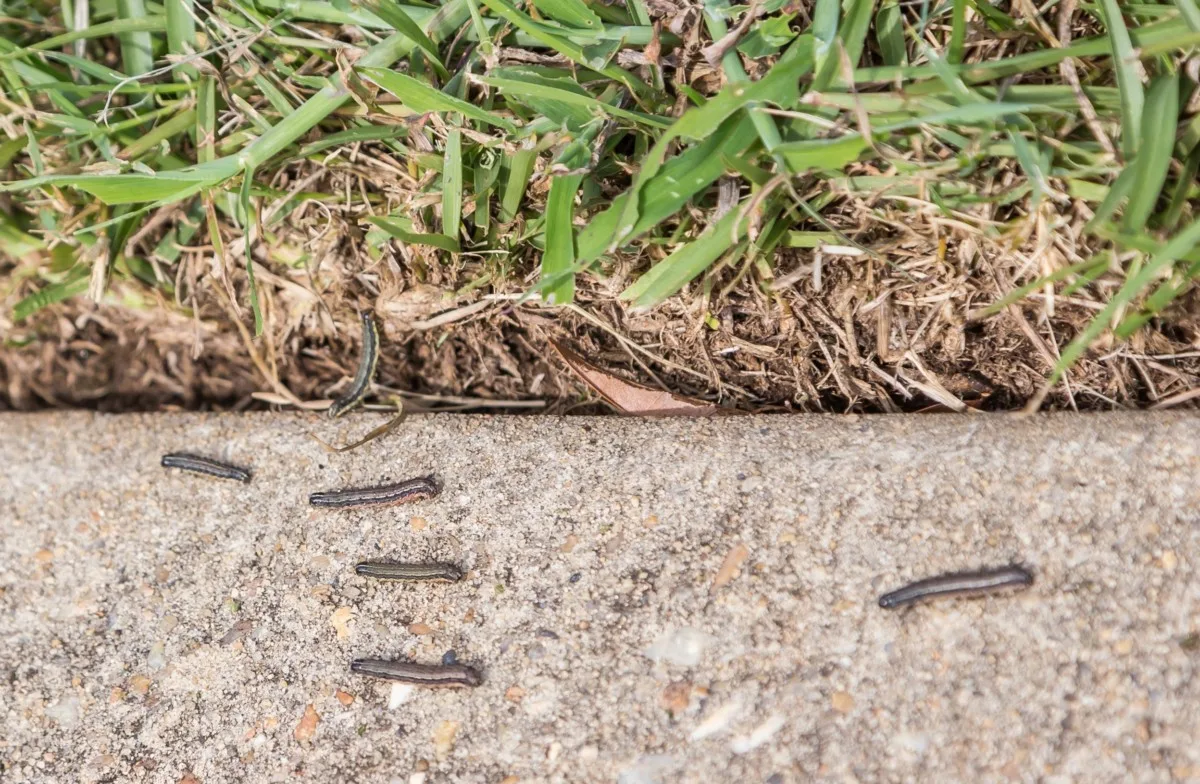
These tiny marching caterpillars can easily decimate your lawn, and if hungry enough, they’ll happily head into the garden too.
As their name suggests, armyworms travel in troops and eat as much as a small army, munching their way across the late summer landscape before burrowing into the ground to pupate and start the whole process over again.
When it comes to destruction, you’d be hard-pressed to find a more able pest. But what’s an organic gardener to do when they’ve sworn off the use of dangerous pesticides?
As it turns out, plenty.
In fact, the organic gardener has a plethora of tactics in their arsenal to help win the war waged by these hungry caterpillars each fall.
Read on to learn all the natural and highly-effective practices at your disposal when dealing with an armyworm invasion.
Oh, I was kidding about the tiny army boots. You can get up off the grass now.
Enemy Number One – Spodoptera
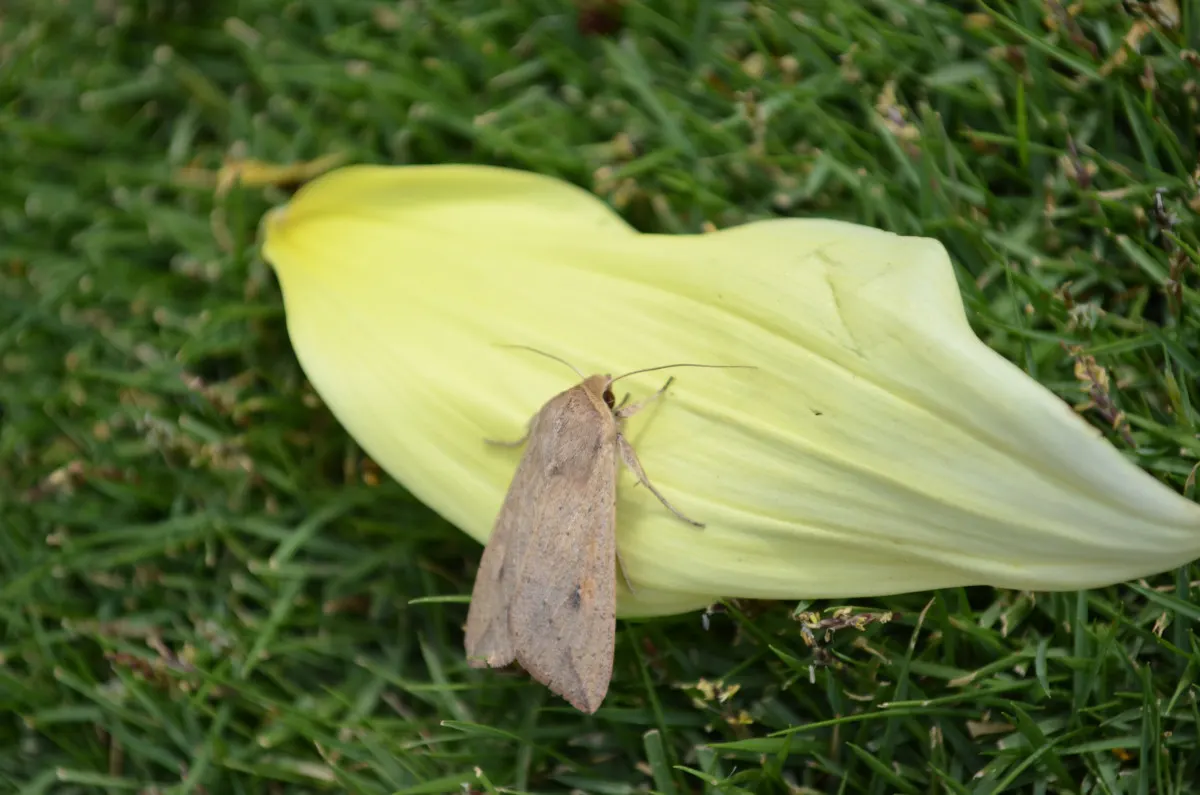
Armyworm is a generic term for several species of night-time moth larva in the Spodoptera genus. There are several dozens of species in the genus. Tobacco cutworm, beet armyworm, and Egyptian cotton armyworm are a few common culprits. They’re found nearly all over the world and can devastate anything from your yard and garden to commercial crops.
These little guys aren’t intimidating on their own; most are between 1 ½” to 2” long when fully grown. What makes them a problem is their mode of travel. Once armyworm eggs hatch, they travel and feed together in groups.
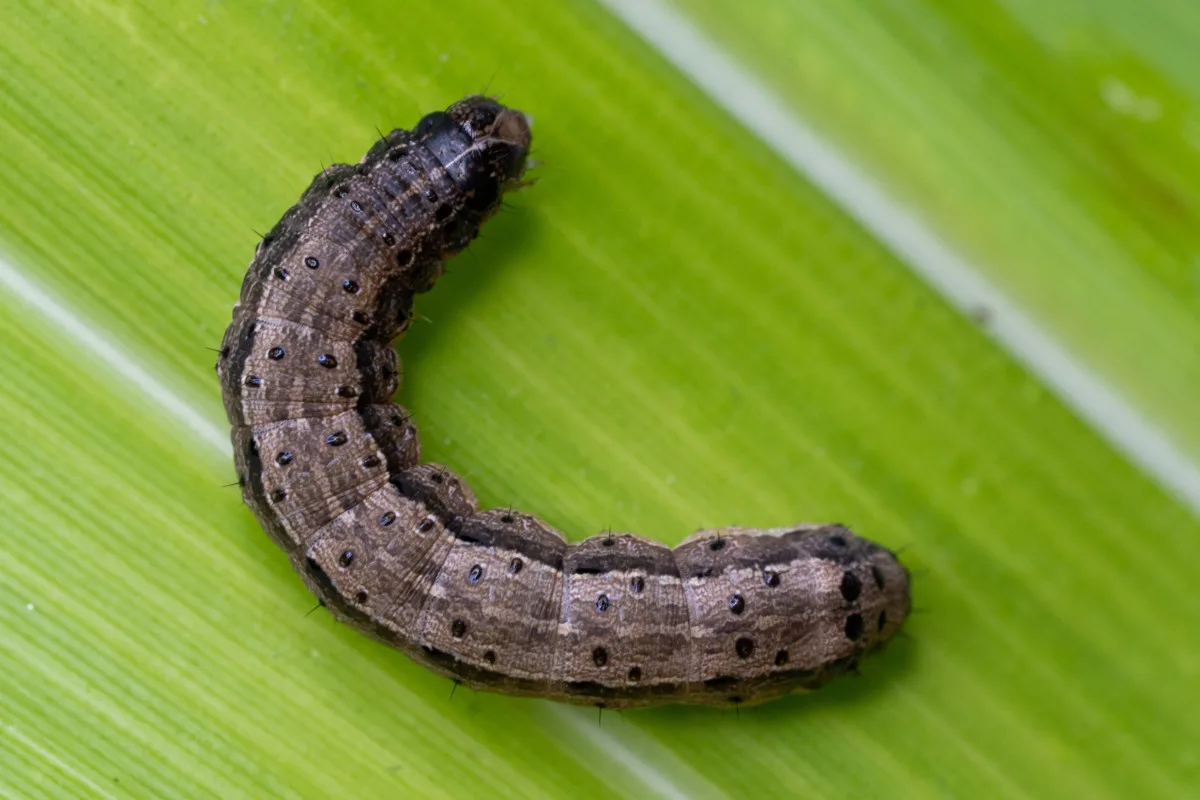
They eat voraciously before burrowing into the ground to pupate into the moth stage, which will emerge to lay eggs and begin the process again. Many of these moths lay well over a thousand eggs and can lay 4-5 generations each season.
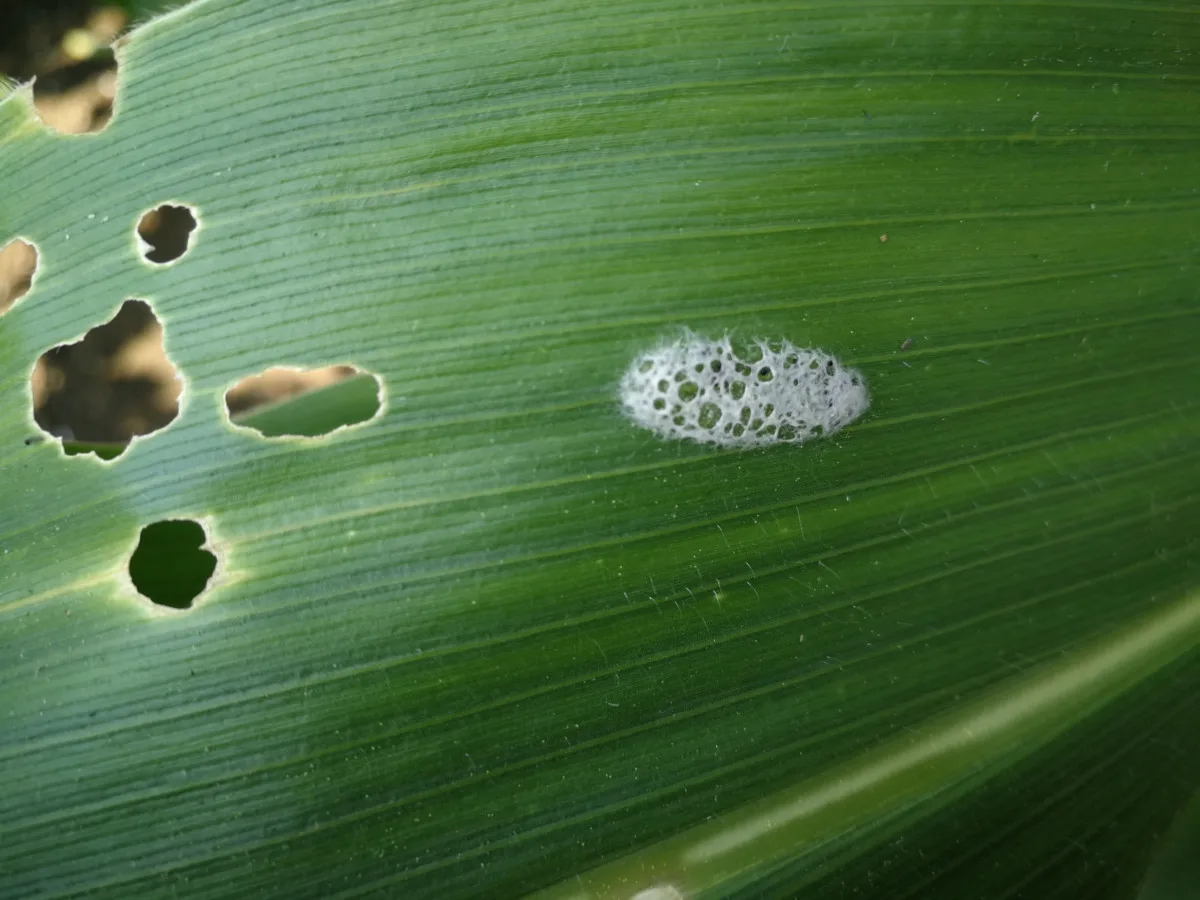
When you start thinking about those kinds of numbers concentrated in a small area, it’s no wonder they pose a serious threat to gardeners and farmers alike.
Because they’re so small, it can be tricky to find them until you have a full-blown infestation where the damage is quite pronounced. Look for armyworms in the early morning or evening, when they’re most active, check under leaves, or if you’re looking for them in the grass, look for brown patches of grass with chewed tips.

Another easy way to test your lawn for armyworms is to mix two tablespoons of liquid dish soap into a gallon of water and sluice a patch of lawn with it. If your yard comes alive with wriggling bodies, you know you’ve got an armyworm problem.
(This won’t solve your problem by killing the worms, the soap merely irritates their skin.)
Identifying Armyworms
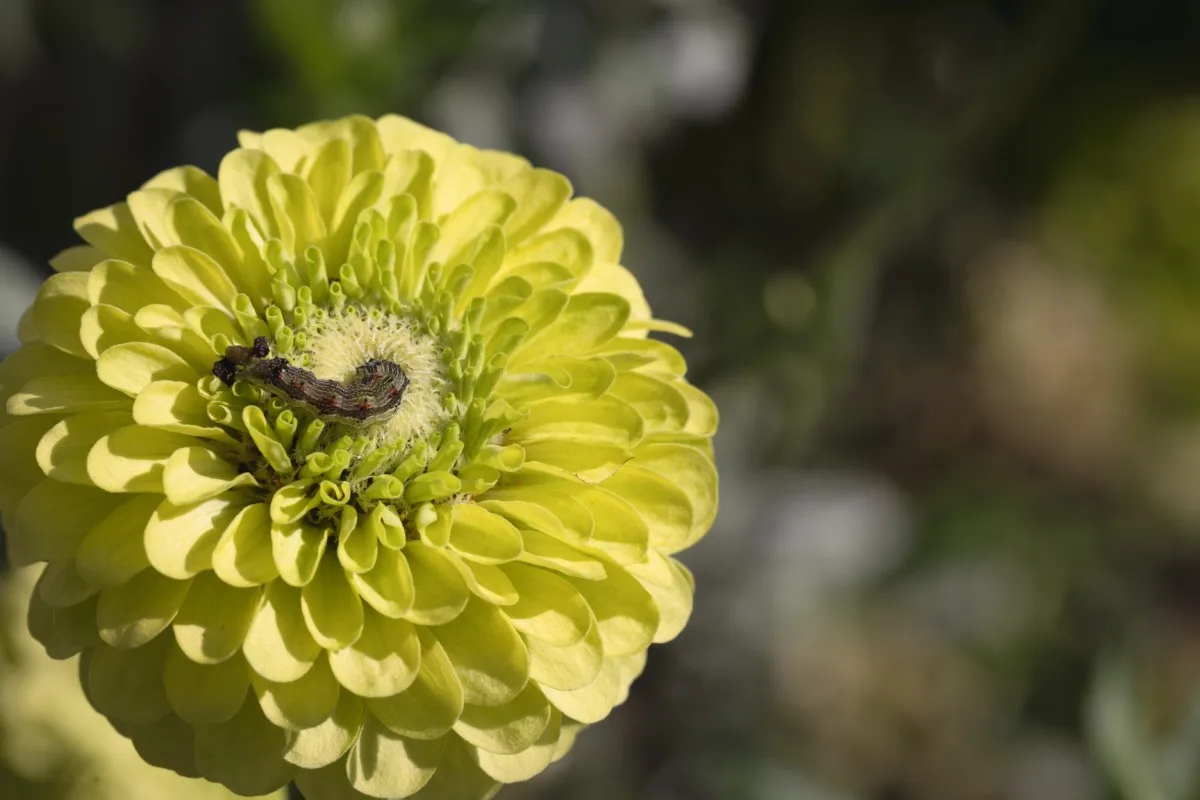
They come in your typical camo colors – brown, green, and black and are easily identified by several tell-tale traits.
- Colored stripes that run the length of their body – orange, yellow, brown or green
- These are not fuzzy caterpillars
- Some have four spots in the shape of a square down the body
- And finally, on their heads, you will find an inverted “Y,” as in “Why are you eating my lawn, dude?”
Time of Year and Weather Conditions
Infestations typically happen in late summer to early fall, but some cutworm species are active from March through October. It’s best to check with your local agriculture extension office to find out which species is most common in your area and when to expect them to emerge.
They thrive in periods of hot weather with occasional bouts of rain. These weather cycles create the perfect incubation conditions for the eggs to hatch out in great numbers.
How to Get Rid of Armyworms
1. Removal By Hand
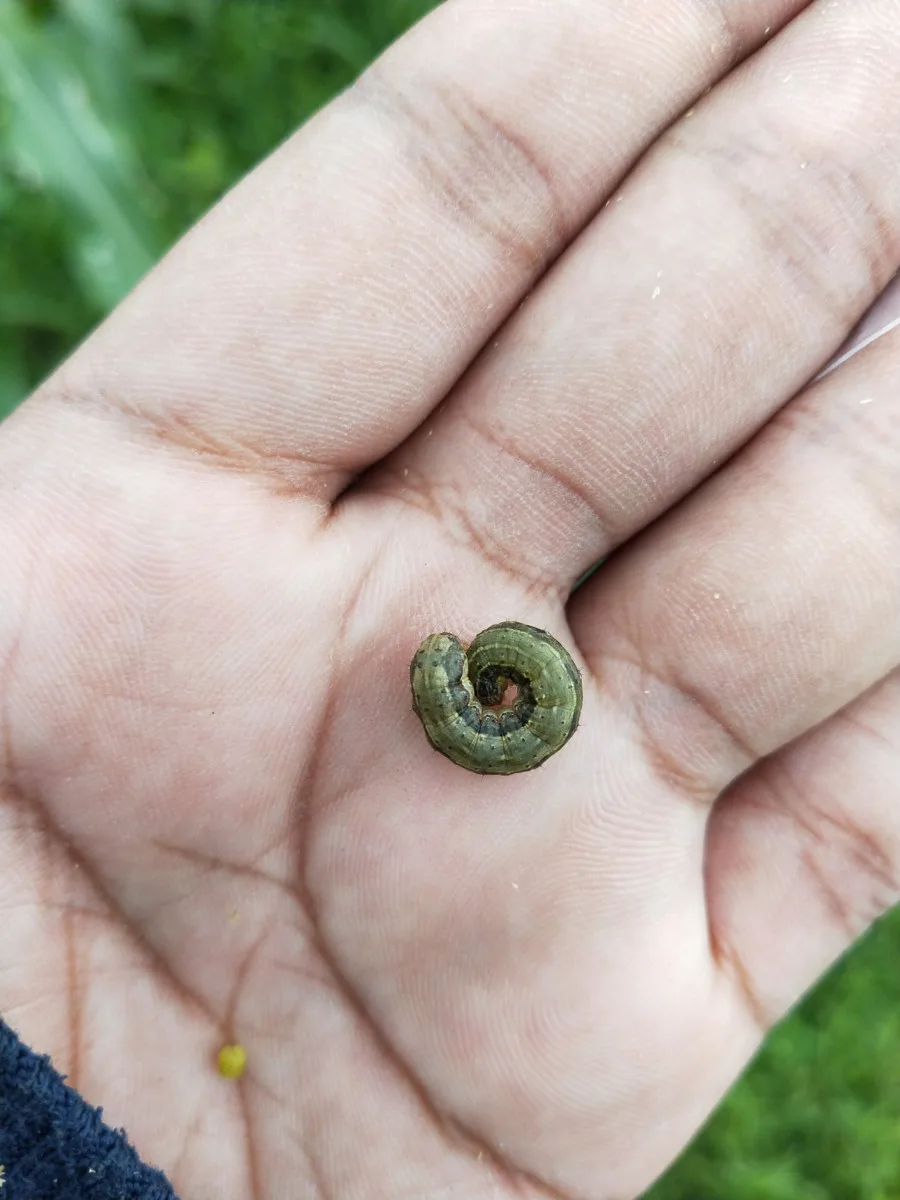
Yup, this always tops the list of pest removal tips mainly because of how effective it is. Sure, it’s fussy, but I’m always amazed at how well it works. You’ll eliminate the pest without negatively affecting the other insects in your garden.
Drop the worms into a bucket of soapy water, where they will drown. Or, if you have chickens, drop the worms into a baggie or jar, and your flock will have a grand time eating these wriggling treats, and you’ll be rewarded with protein-rich eggs.
2. Encourage Their Natural Predators
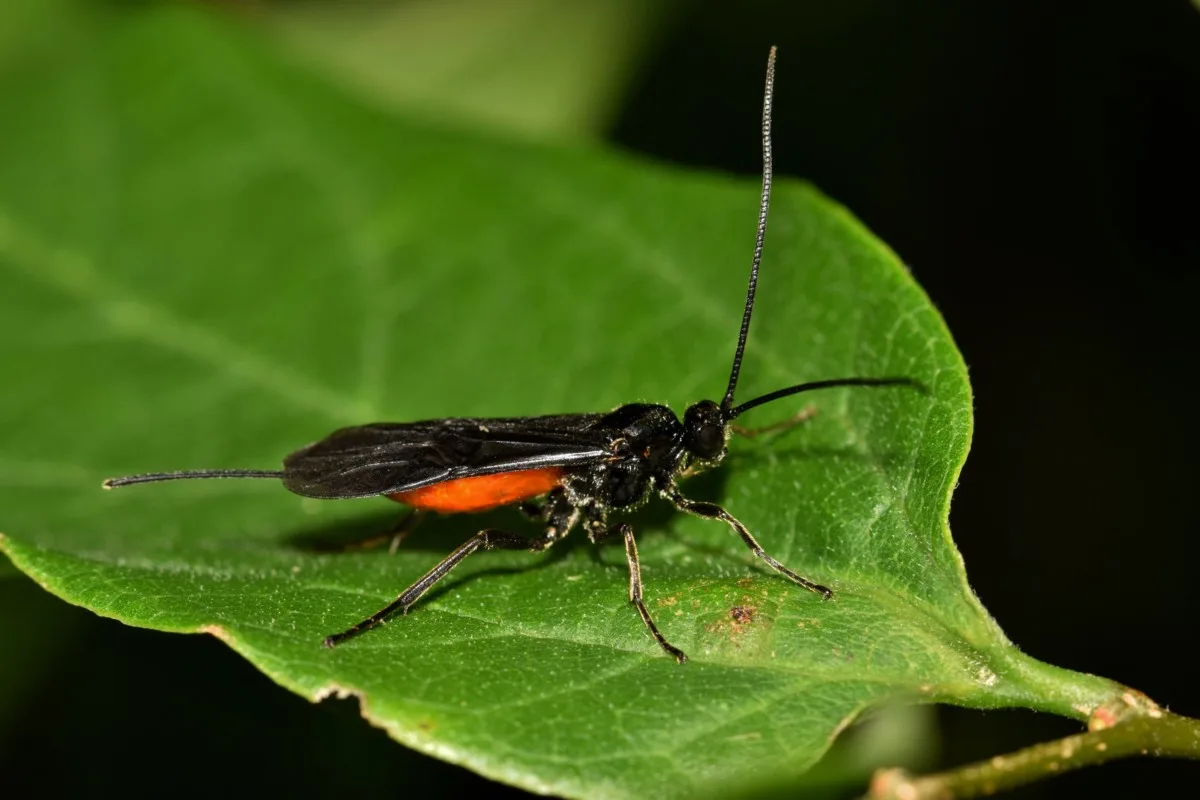
There are many things besides chickens that like to snack on armyworms. Invite these critters into your lawn, and you can stop an infestation before it starts. Birds are great at keeping armyworms at bay, so consider taking steps to attract wild birds to your yard. Ladybugs, braconid wasps, lacewings and spiders also like to snack on armyworms, so encourage these beneficial insects to hang out in your garden.
One of the best ways to invite beneficial insects to hang out at your place is to plant a diverse array of plants in your garden. Flowers, like calendula and nasturtiums and herbs, like dill and chamomile, do an amazing job at attracting all types of beneficial insects. This is just another reason to adopt companion planting sooner rather than later.
The more you can mimic the incredible diversity of plants found in nature, the more balanced your mini-ecosystem will be.
3. Start a Backyard Flock
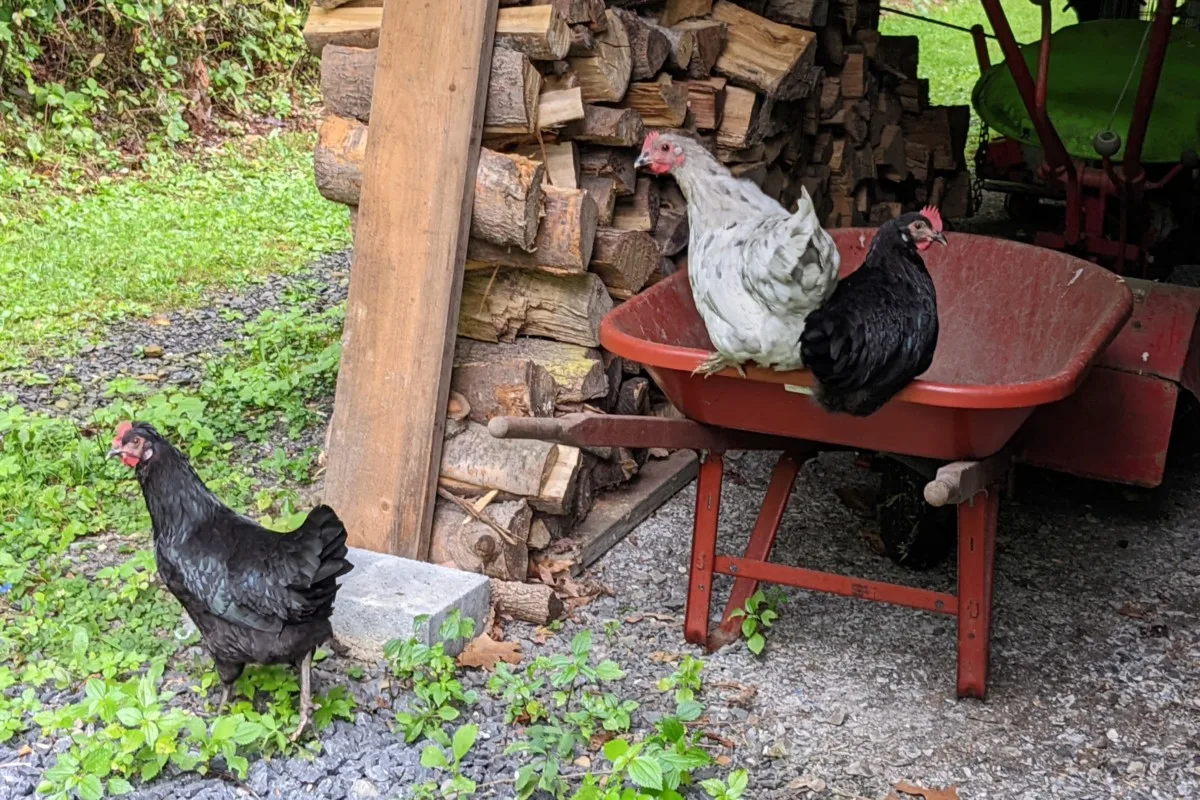
Get yourself some chickens. I know, that seems like a big solution to a temporary problem. But if you find yourself dealing with numerous pests in your yard each year, like armyworms, ticks and mosquitoes, a few chickens will put a major dent in their numbers.
Not to mention you get the added benefit of eggs. Chickens are excellent at backyard bug control, and their personalities make it even more delightful to watch them while they work. Heaven forbid we see a bug and eat it before the others notice; no, we have to peck it and show it off, thus creating a fuss while everyone tries to steal it from the bird who found it.
4. Plant Trap Crops

Trap crops are grown specifically to lure garden pests away from other plants.
Consider planting trap crops outside your garden or along your property line to entice armyworms away from the main course. Corn can be a great trap crop for certain armyworm species. And if you have a year without armyworms, you can have corn too.
5. Garlic Oil Spray

This is a great recipe if you deal with armyworms every year. You can make it ahead of time, so it’s ready when they emerge.
Smash six garlic cloves well, then add them to a jar with a quarter cup of olive oil. Let the garlic mixture soak for at least a week. As needed, mix one tablespoon of the garlic-infused oil with two quarts of water and a couple of drops of liquid dish soap. Shake the mixture and spray down plants, soaking them completely.
This won’t kill the armyworms but prevents them from feeding on your lovely lawn and garden.
6. Protect Your Corn
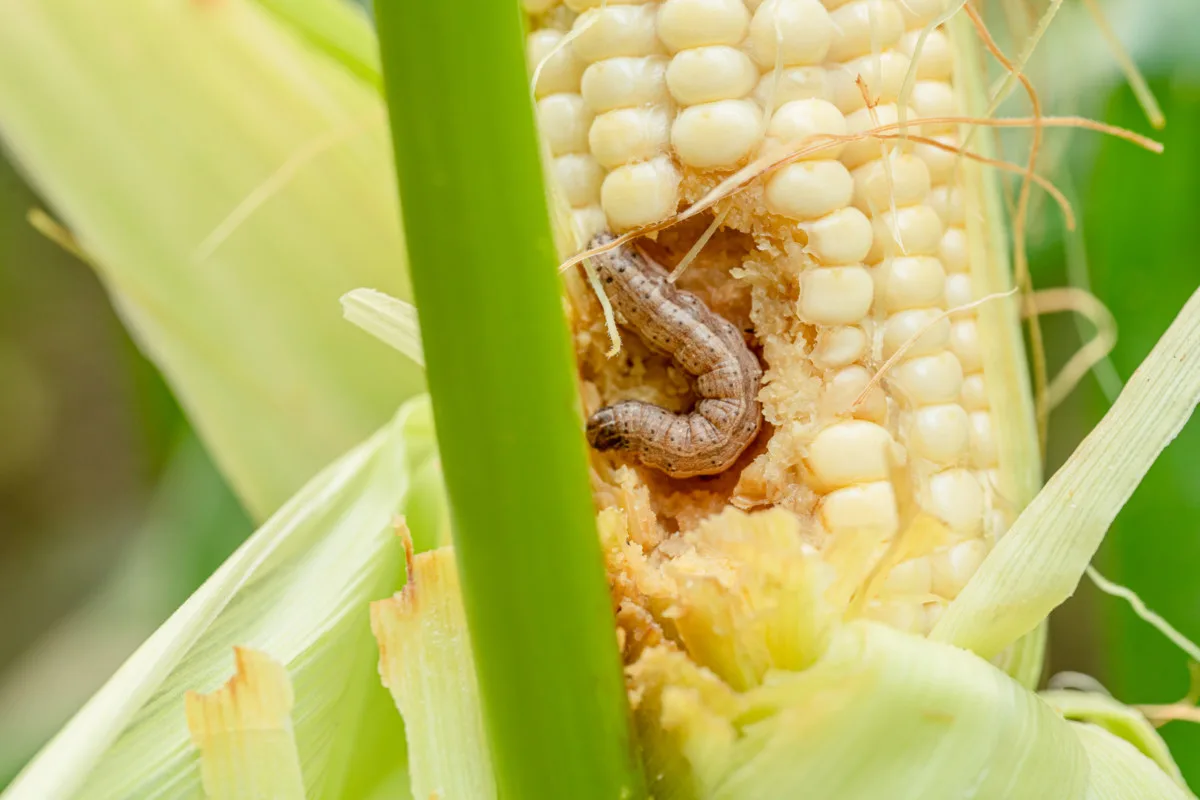
If you deal with armyworms destroying your corn each year, rub a little cooking oil or shortening at the bottom of the stalk to attract ants to the corn. The ants happily munch on the armyworms but leave the corn alone.
7. Pyrethrin Spray
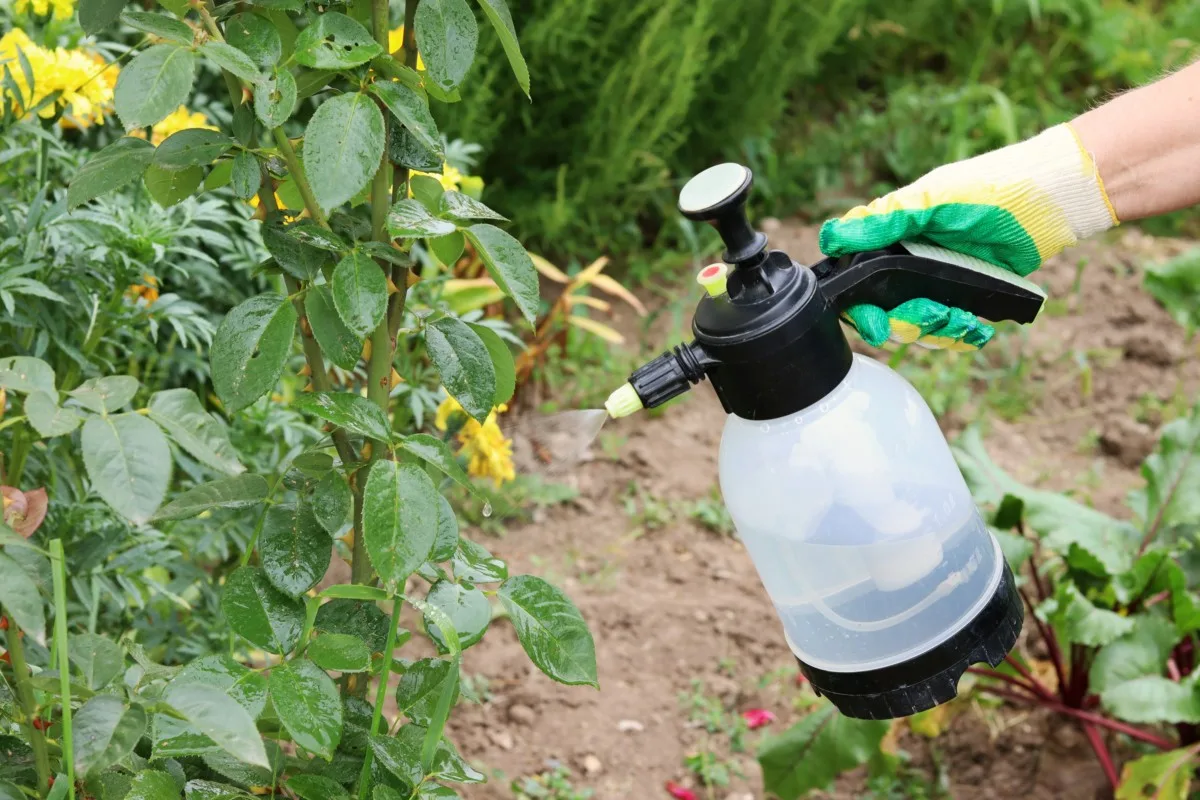
Pyrethrin spray is an effective insecticide made from white chrysanthemums. If your infestation is bad enough, it may warrant using a natural insecticide. But make no mistake that it is still an insecticide and will kill not just the armyworms but all insects it comes into contact with. This includes pollinators and beneficial insects. Save this as a last resort.
Spray in the evenings while armyworms are active and the blossoms of other plants are closed, so pollinator activity is limited.
Should I Do Anything at All?
Over the years, more organic gardeners are taking a hard look at their relationship with the insects we consider pests and choosing to do nothing. It’s becoming more apparent how interconnected even these tiny annoying insects in our gardens are to our lives. And our choice to wipe out one species of insect in the garden can often lead to the elimination of many beneficial species as well, species that would happily eat the pest species when left to their own devices.
When choosing what, if anything, to do, here are a couple of things to consider.
Is it early in the season? Younger plants are often not mature enough to handle many pests, and you may need to intercede.
If it’s later in the season, can you wait and see if this encroaching hoard keeps moving as it munches?
How close to harvesting are you? Rather than treating the caterpillars, consider an early harvest.
If they’re eating your lawn, how bad is the damage? If left, could the patch of turf recover within a few weeks? Or, does your damaged lawn present you with an opportunity to replace it with a creeping thyme lawn?

Often, true organic gardening means doing nothing and letting nature take its course. Usually, the surprising result is that our plants bounce back, and we miss a week or two of extra veg.
In the end, though, the choice is yours. Only you know what will work best and what level of pest infestation you’re willing to tolerate.

Get the famous Rural Sprout newsletter delivered to your inbox.
Including Sunday ramblings from our editor, Tracey, as well as “What’s Up Wednesday” our roundup of what’s in season and new article updates and alerts.

